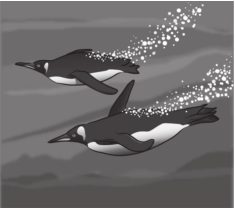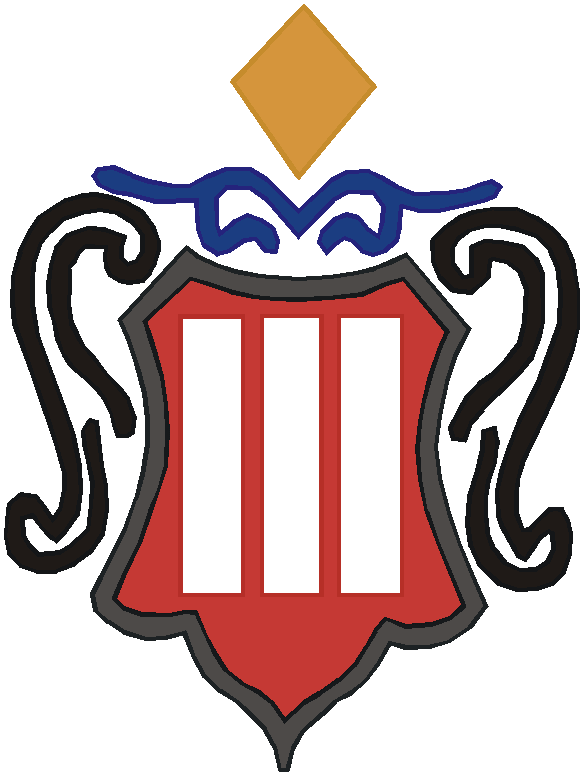cell survival protocol *** these are general guidelines for a cell survival, your particular set of experiments may call for adjustments to
Cell Survival Protocol
*** These are general guidelines for a cell survival, your particular
set of experiments may call for adjustments to this protocol.
Plating Cells
=============
Plate enough cells in 100mm plates so there will be1 million cells on
the day the experiment is processed. This needs to be done two or
three days before you start the experiment. A typical experiment will
be run with 4 drug doses, with 5 radiation doses (all with built-in
controls).
For example, your 20 plates could be as follows: Control Group with 0,
2, 4, 6, and 8 Gy of radiation; 1µM drug with 0, 2, 4, 6, and 8 Gy of
radiation; and a 3 µM and a 10µM Group each with 0, 2, 4, 6, and 8 Gy
of radiation.
Drug and Radiation Treatments
=============================
The radiation and drug concentrations will vary, but here is a typical
experiment.
Day One: Add drug at 10:00 am for a 24 hr drug exposure.
Day Two: At 9:30 am irradiate your cells. At 10:00 you should be able
to start processing your experiment.
Dilute the drug stock in order to add more than 10µl of drug to each
dish.
Processing Experiment
---------------------
Set-up
======
1.
Make up a plating sheet (see attached example) with the number of
cells you want to plate per condition. If you are not sure of the
number to plate make a duplicate set of plates for that condition
(i.e. E1 and E2). The duplicate set should contain at least 4X the
number of cells.
2.
Label 1 15ml centrifuge tube for each of your drug/radiation
conditions
3.
Label 1 counting vial for each condition and fill it with 9.9 ml
of Isoton fluid.
4.
Label 3 dishes for each condition (label 4 dishes for your
control). Label 100mm plates for cell counts of 100,000 to 200,000
cells (do not plate more cells then this). All others can be
plated in 60 mm dishes. One plate per condition should have the
following information on it: Experiment #, Letter for that
condition, treatment dose, cell number you want to plate (i.e.
R31, S2, 10C5, 2 x 104 (Numbers and letters are explained on the
plating sheet)). The other two plates just need the letter on
them.
5.
Fill all dishes with media-5ml in the 60 mm dishes and 10 ml in
the 100mm.
Trypsinizing Cells
------------------
1. Check the condition of your cells under the microscope-- it's
pointless to start if you don't have any living cells.
2.
Aspirate media
3.
Add 5 ml PBS
4. Add 5 ml Trypsin (to get cells off dish).
Incubate cells for a few minutes; some cell lines take longer than
others.
5. Add 5 ml media to all dishes. (sticky cell lines will have to be
done one at a time-ie. add media, and immediately pipet into tube of
that dish)
6. Using 10 ml bulk pipets, rinse the dishes using a horizontal then
circular/vertical motion to help remove cells from dish. Rotate the
dish 90 degrees and repeat. Pipet into tubes.
7. Centrifuge 5 minutes, 1000 rpm.
8. Aspirate supernatant, keep pellet.
9. Add 10 ml media (5 ml if pellet is tiny) and resuspend using bulk
pipets.
10. Vortex tubes. Remove 100 µl from tubes to non-sterile counter cups
containing 9.9 ml isotonic solution.
11. Count cells twice (Each count measures only 0.5 ml).
Making Dilutions & Plating
– See plating sheet for examples (The control plate is calculated
here)
1.
Calculate the number of cells per ml. If the counts were 617 + 646
= 1263 cells / ml in counting vial . This is a 1:100 dilution so
there is 126,300 cells/ml in the tube.
2.
To make plating easier, we make dilutions of 10,000 cells.
(10,000 cells) / (number of cells/ml in tube) = dilution factor
(10,000 cells) / (126,300 cells/ml) = 12.63
therefore, I want to add 1 ml from my tube of cells to 11.63 ml of
media.
2.
If you have 2 x 104 cells or more just do a straight addition of
cells from the tube.
i. e. Letter D on the plating sheet (20000 cells)/ (51400 cells/ml) =
389 µl of cells/ dish
2.
Add the appropriate number of cells to each dish.
a.
i.e. 250 cells equals 25 µl from dilution.
b.
Do not add less than 25 µl of cells to a dish. If you need100
cells, make another 1:10 dilution (0.5ml cells from first dilution
+ 4.5 ml of media). Then you can add 100 µl to each dish.
5.
If there are not enough cells to fill at least two plates, split
the remaining number of cells into two plates. Make note of the
number of cells actually plated. (See J on Plating Sheet)
Staining
--------
After about 10 days you can stain your plates. There is a staining
protocol in the Procedure Book or see below. The colonies need to have
at least 50 cells each, but they should still look healthy and stuck
to the plate.
When colonies are of sufficient size (>50 cells/colony), remove from
the incubator.
Wear a lab coat and gloves.
Label the sides of the dishes with a solvent (alcohol resistant) pen.
You can throw away the lids at this point.
Add methanol/acetic acid to all the dishes, leaving the medium in the
dishes. Point the tip of the squirt bottle at the side, not the bottom
of the dish. Add just enough for the medium to turn yellow.
Dump all the dishes.
Add more Methanol/acetic acid to all the dishes. Use enough to
completely cover the bottom of the dish. Let sit 2-5 minutes.
Dump the Me/Ac from the dishes and dip the dishes into the beaker of
water. Have the water running. Dump and dip 2 dishes at a time instead
of dumping all then dipping.
Add crystal violet solution to cover the bottom of the dishes. Dump
and dip as above. It's important to rinse well at this step.
Let the dishes dry open side down.
Methanol/Acetic acid Methanol 7 parts, Glacial acetic acid 1 part
Prepare this in the fume hood!
Crystal violet ~1 gram/liter of water It's should be a deep purple.
Counting Colonies
-----------------
Count the number of colonies per dish with the red counting pen and
the dissecting microscope. Write the number of colonies on the bottom
of the plate. Only count colonies with at least 50 cells. There needs
to be at least 20 colonies per plate to use that condition in the
final calculations. The duplicate set of plates do not have to be
counted if there are at least 20 colonies in the first set
(i.e. E1 and E2). When all the plates are counted, fill the colony
number on your plating sheet. Enter the plating sheet information into
the computer .
 CHATHAM FIRE PROTECTION DISTRICT BOARD OF FIRE COMMISSIONERS SCHEDULE
CHATHAM FIRE PROTECTION DISTRICT BOARD OF FIRE COMMISSIONERS SCHEDULE SRPSKO DRUŠTVO ZA ZAŠTITU VODA INSTITUT ZA VODOPRIVREDU “JAROSLAV
SRPSKO DRUŠTVO ZA ZAŠTITU VODA INSTITUT ZA VODOPRIVREDU “JAROSLAV INFORME PARA LA VALORACIÓN DE LOS CRITERIOS SOMETIDOS A
INFORME PARA LA VALORACIÓN DE LOS CRITERIOS SOMETIDOS A ANIMAL STUDIES MCAS QUESTIONS 20042013 MCAS QUESTIONS ANIMAL STUDIES
ANIMAL STUDIES MCAS QUESTIONS 20042013 MCAS QUESTIONS ANIMAL STUDIES REUNIONES INTERHOSPITALARIAS DE RADIOLOGÍA RECTÁNGULO 472 RECTÁNGULO 471 GRUPO
REUNIONES INTERHOSPITALARIAS DE RADIOLOGÍA RECTÁNGULO 472 RECTÁNGULO 471 GRUPO QUÍMICA KATINA GARCÍA A FEBRERO 2001 RESPUESTAS TAREA 3
QUÍMICA KATINA GARCÍA A FEBRERO 2001 RESPUESTAS TAREA 3 PLAN ROZWOJU MIEJSCOWOŚCI PNIÓW NA LATA 20042006 PLAN ROZWOJU
PLAN ROZWOJU MIEJSCOWOŚCI PNIÓW NA LATA 20042006 PLAN ROZWOJU TELÉFONOS DE INFORMACIÓN 012 DESDE LA REGIÓN DE MURCIA
TELÉFONOS DE INFORMACIÓN 012 DESDE LA REGIÓN DE MURCIA EXPEDIENTE 10 G2007OT TÍTULO PROYECTO DE REFORMA DE PLANTA
EXPEDIENTE 10 G2007OT TÍTULO PROYECTO DE REFORMA DE PLANTA ZAŁĄCZNIK NR 3 DO REGULAMINU KONKURSU PRACODAWCY W HONOROWYM
ZAŁĄCZNIK NR 3 DO REGULAMINU KONKURSU PRACODAWCY W HONOROWYM